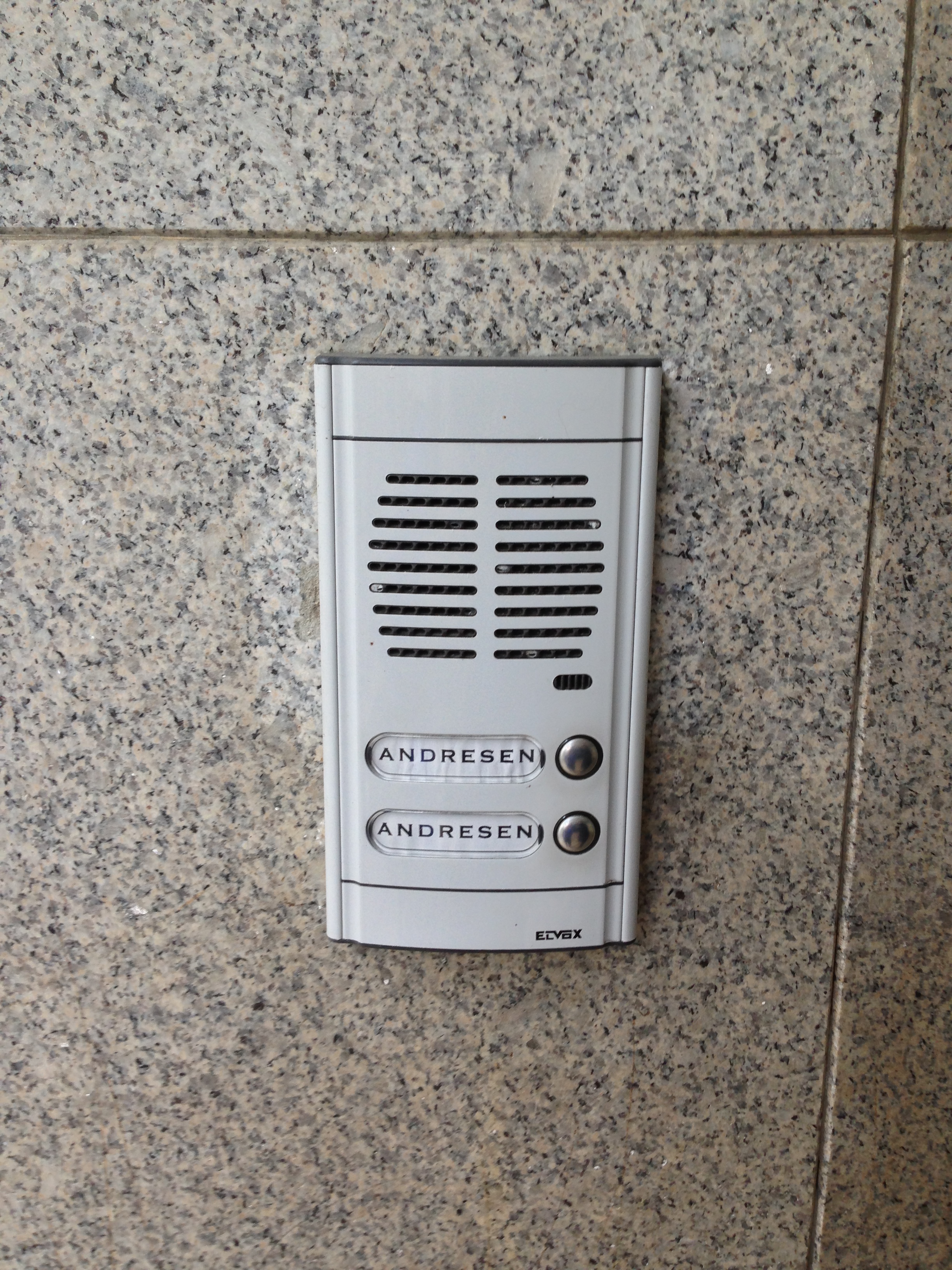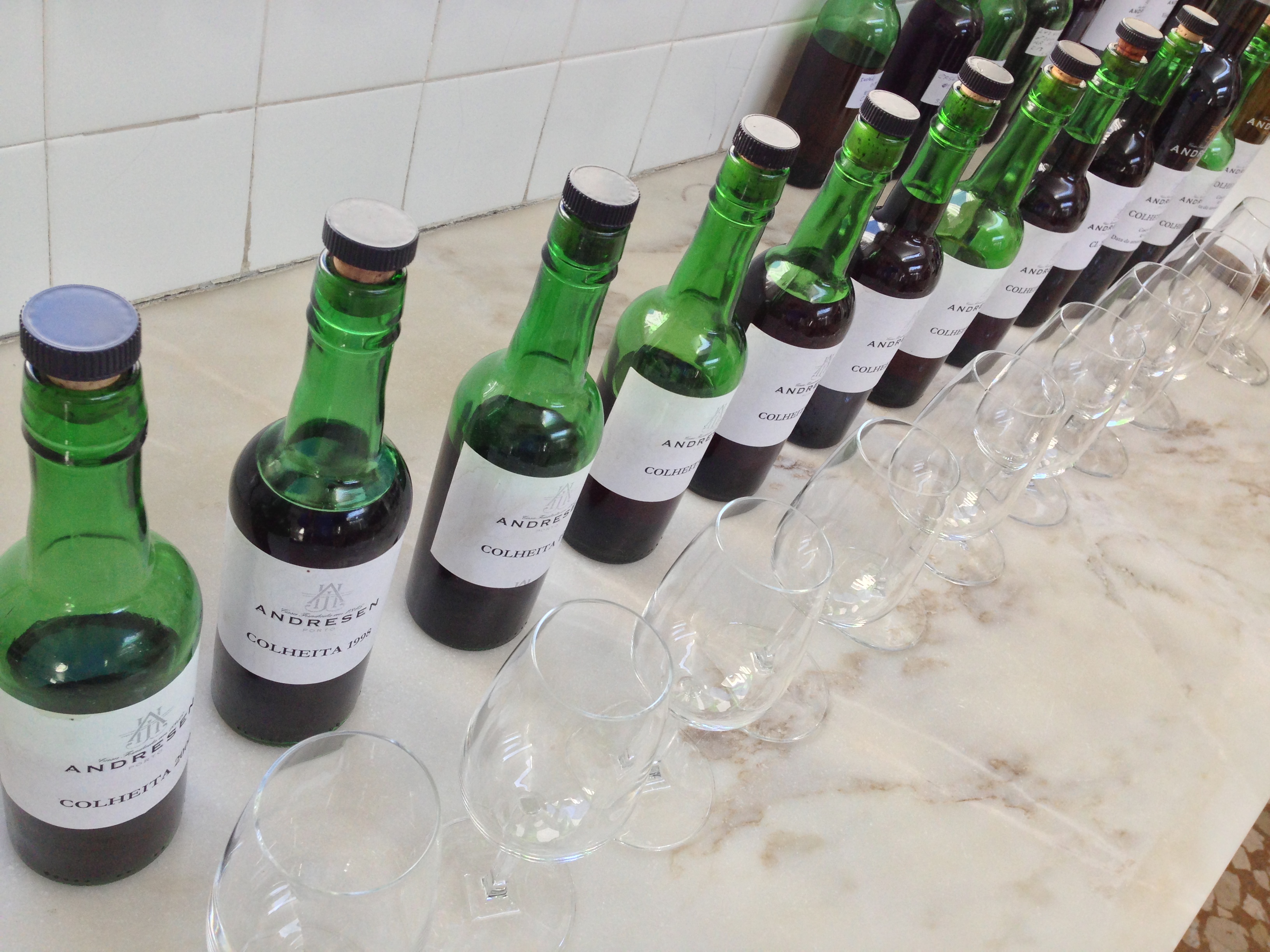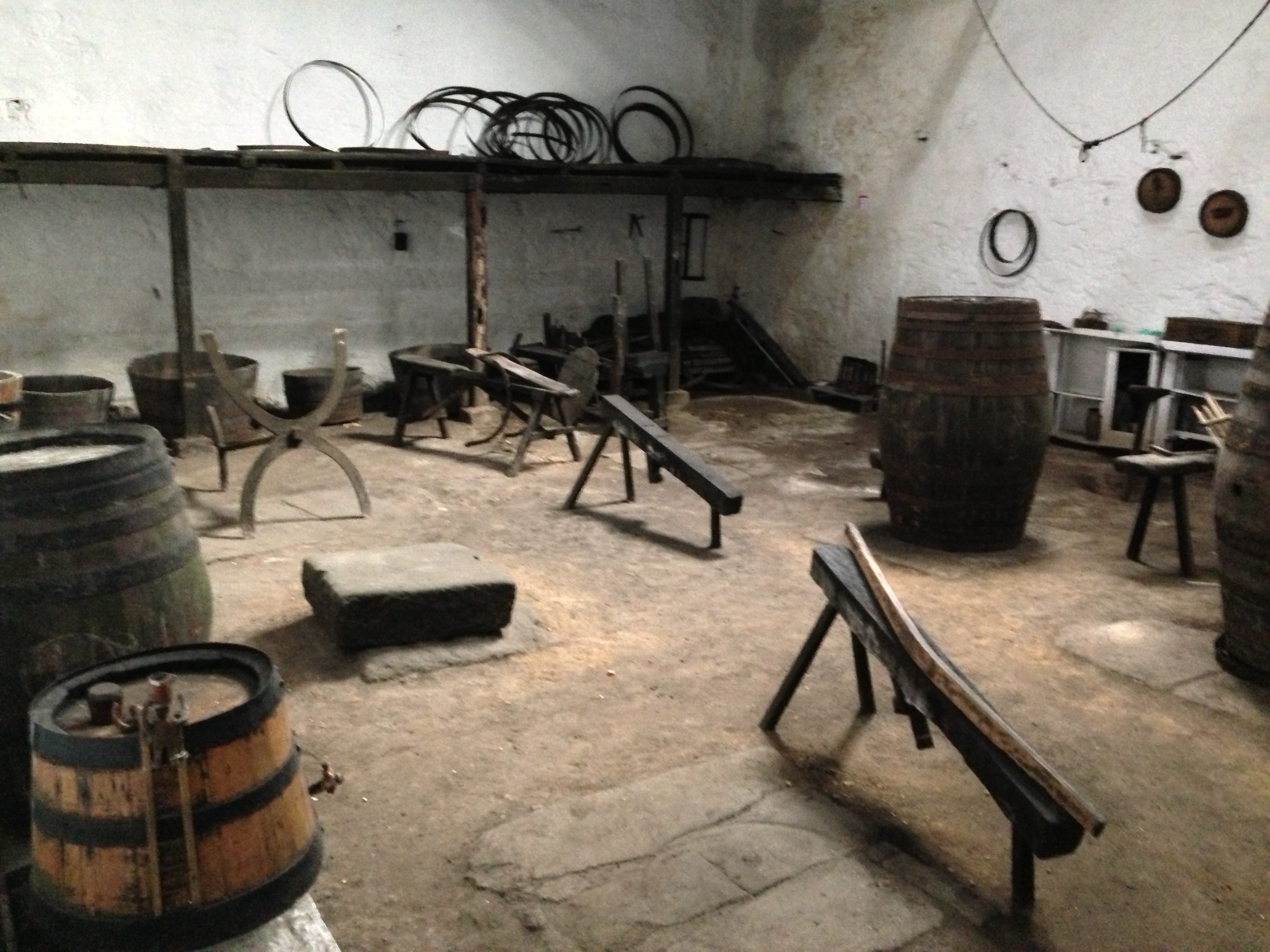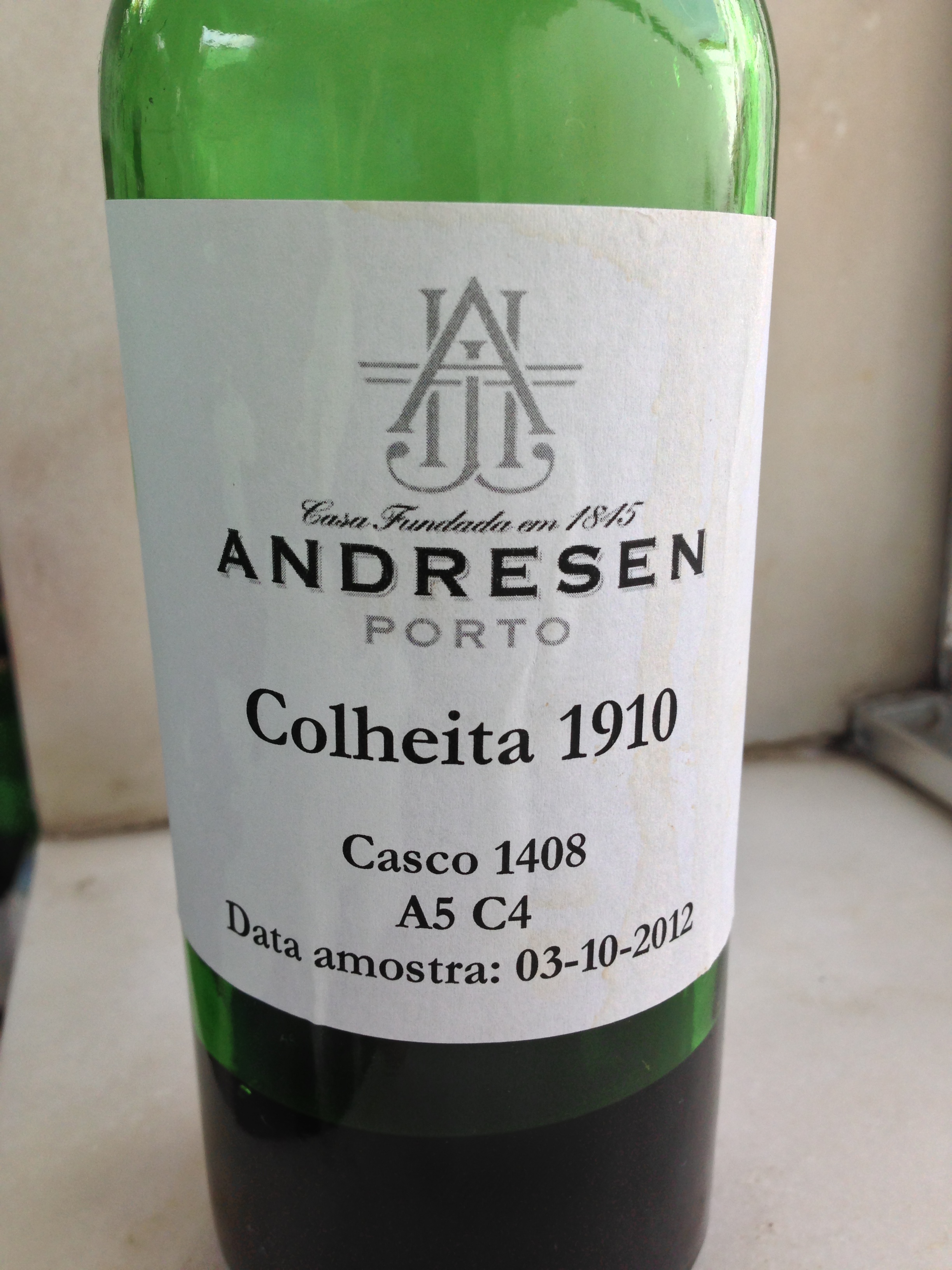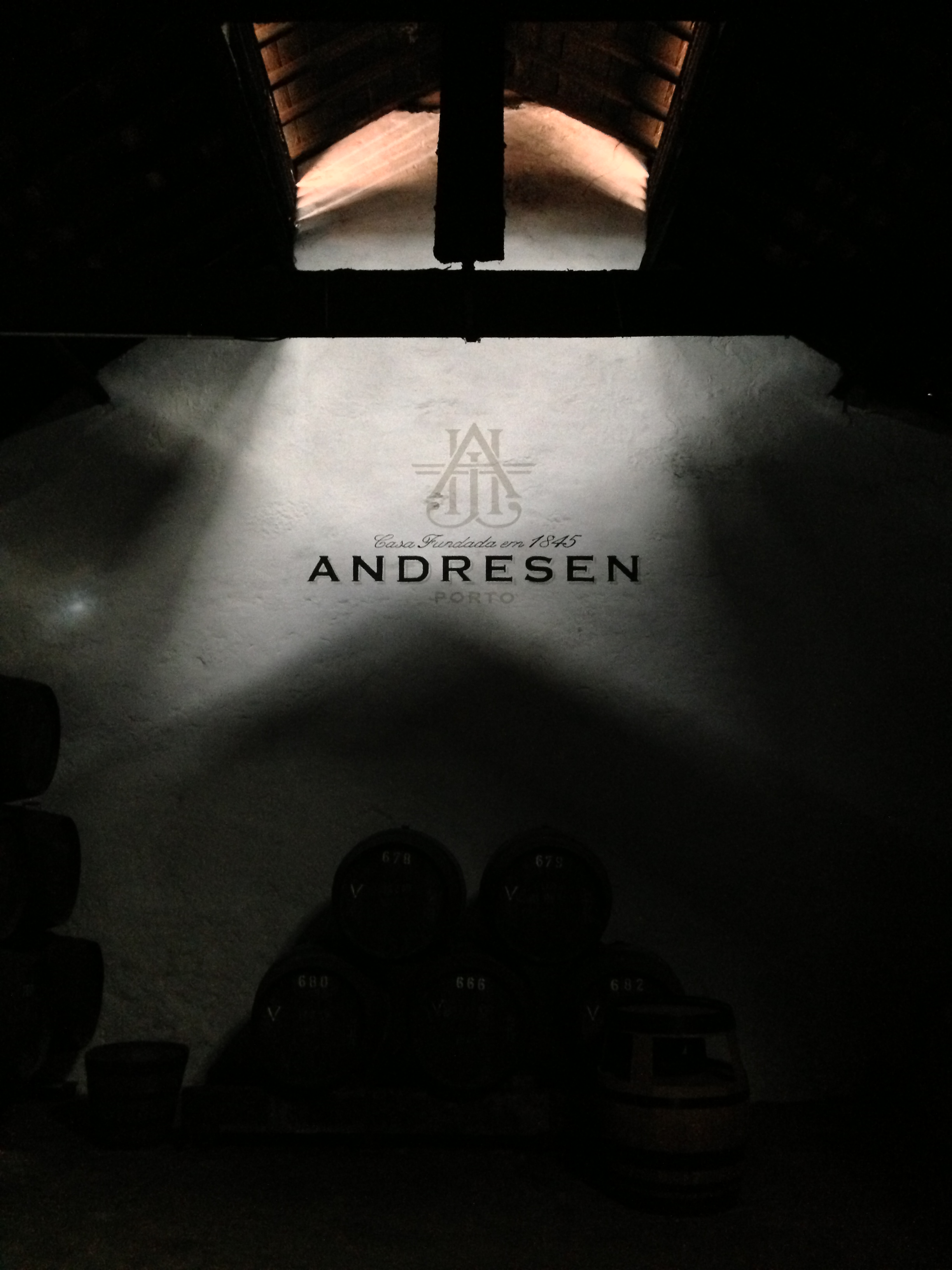Andresen: a century of great tawny port
Posted on 18 July 2013
Andresen enjoys a good reputation for their tawny ports among port aficionados but it is a very confidential brand. Tellingly, there is not a single mention of this port house in Richard Mayson’s classic “Port and the Douro” book (published by Faber and Faber, now Mitchell Beazley; it is browsable on Amazon). I must admit probably never to have consciously tasted an Andresen wine before my my visit to Quinta do Vale Dona Maria two springs ago when Cristiano Van Zeller presented a lovely 1991 Colheita. When he said it was actually an Andresen tawny purchased to be released under the Zellers label, I made a firm decision to visit Andresen at the first opportunity.
The cellars themselves add to the confidentiality. Unlike other port lodges in Vila Nova de Gaia, there is not even a sign on the street. But after a warm greeting by director Carlos Flores, I had a most fascinating tasting of older wines that firmly put Andresen on the map of top tawny port producers.
The wines show an interesting style: “elegant” is probably the best word. Now tawny port, which is highly oxidised with often violent aromas and a fair whiff of volatile acidity, as well as being 20% alcohol or more, might not be a wine to intuitively term as elegant. But the Andresen tawnies achieve a delicacy of bouquet and smoothness of texture that makes them less pungent than many counterparts (i.e. Krohn, which I reviewed in my previous post). You see it also from the colours, which are some the lightest I’ve seen in tawny ports, including the younger vintages here.
We kicked off with the Colheita 2000, a fruity and elegant wine that only starts to show some age, and navigated through a walnutty-coffeed 1998, a drier, more vinous, quite superlative 1997, a somewhat underwhelming balsamic 1995 and a greenish-fruity, quietly complex 1991 before closing the younger wines with a very impressive 1992, showing the outstanding year with an assertive baked fruits & almonds profile, although it remains a silky understated wine as per the Andresen style.
Then we tasted the 1982 which provided an interesting comparison with Krohn’s wine from the same vintage that I tasted an hour earlier: where Krohn overwhelms the drinker with staggering power, Andresen is more about subtle nuances. There is a miraculously fresh raspberry note hovering above, adding complexity. The 1980 is also very good, more aged and Cognac-like with an interestingly dry, pungent finish. These wines reinforced my opinion that Colheita often reached top form at the age of between 25 and 35 years.
The 1975, an underrated year for Vintage Port, produced many good Colheitas including the very-pale coloured, Armagnac-pungent yet fruity and sweet Andresen. I preferred it to the 1970, although the latter was not a cask sample as all other vintages described here, but a 2010 bottling (and it is not a commercially released wine but a house reserve tagged “Casco 0431”). The 1968 was again compared to Krohn’s outstanding effort but it eventually was another 2010 bottling, the 1963, which stole the show among the older Andresens: dark, concentrated, sappy, complex, it ends on a sustained caramel note and actually could still improve in cask.
It wasn’t over. Carlos Flores generously poured another wine. Deep-coloured with green hues that always indicate a very old port, it upped the game in terms of complexity; powerful, compact, chewy and savoury rather than fruity or sugary; as good as anything I tasted on that day but hard to pin down. A 1955 or perhaps something a little older? Carlos smiled, and showed the bottle: it is a 1910 Colheita. Wonderfully preserved.
Yet amazingly, that wine completely paled in comparison to the next: the 1900 Colheita. What a monumental port. It has all the 1910 had, and more: a deeper brown colour, a more powerful roasted coffee-driven bouquet, and more sweet fruitiness on the palate, retaining a beguiling freshness of grapey fruit after 113 years in the cask. It has to be tasted to be believed – if you’re lucky to secure on the 12 bottles that are put on the market each year.
The current winemaker at Andresen is Álvaro van Zeller, and in a stunning twist of fate, his two ports – the Andresen 2011 Vintage and Maynard’s 2011 Vintage that he vinified for Barão de Vilar – came top of my blind tasting of 55 ports. I feel much more great wine is yet to come out of Andresen.
Disclosure: my trip to Portugal including flights, accommodation and wine tasting programme was paid for by the Douro and Port Wine Institute.


